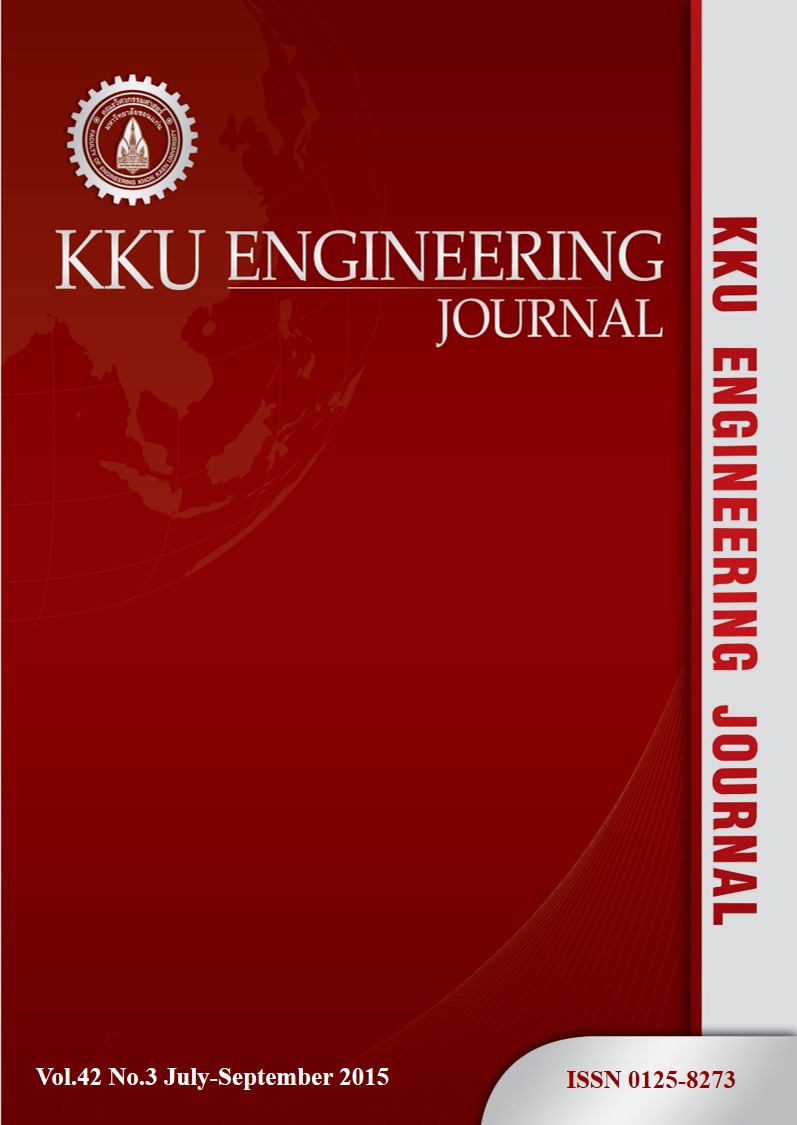Relationship between the variations of hydrogen in HCNG fuel and the oxygen in exhausted gas
Main Article Content
Abstract
The variation of the mixing ratio between hydrogen and compressed natural gas (CNG) in hydrogen enriched compressed natural gas fuel (HCNG) gives different results in terms of engine performances, fuel consumption, and emission characteristics. Therefore, the engine performance using HCNG as fuel can be optimized if the mixing ratio between the two fuels in HCNG can be adjusted in real time while the engine is being operated. In this research, the relationship between the amount of oxygen in the exhausted gas and the mixing composition between the hydrogen and CNG in HCNG is investigated based on the equilibrium equation of combustion. It is found that the main factors affecting the amount of oxygen in exhausted gas when using HCNG as fuel include the error from the air-fuel-ratio (AFR) control, the error from the HCNG composition control, and the intended change of the HCNG composition. Theoretically, the amount of the oxygen in the exhaust should increase by 0.78% for every 5% addition of H2 at stoichiometric condition. This value can be higher or lower for lean and rich engine operation, respectively. The experimental results found that at the equivalent ratio around 0.8 the amount of O2 in the exhaust gas increases about 1.23% for every 5% H2 addition, which inclines with the proposed calculations.
Article Details
How to Cite
Yaom, P., & Watechagit, S. (2015). Relationship between the variations of hydrogen in HCNG fuel and the oxygen in exhausted gas. Engineering and Applied Science Research, 42(3), 263–268. retrieved from https://ph01.tci-thaijo.org/index.php/easr/article/view/38305
Issue
Section
ORIGINAL RESEARCH
This work is licensed under a Creative Commons Attribution-NonCommercial-NoDerivatives 4.0 International License.



